Back to The Roots
By: Eva Slunečková
Photo: Zuzana Veselá, FAINA archive
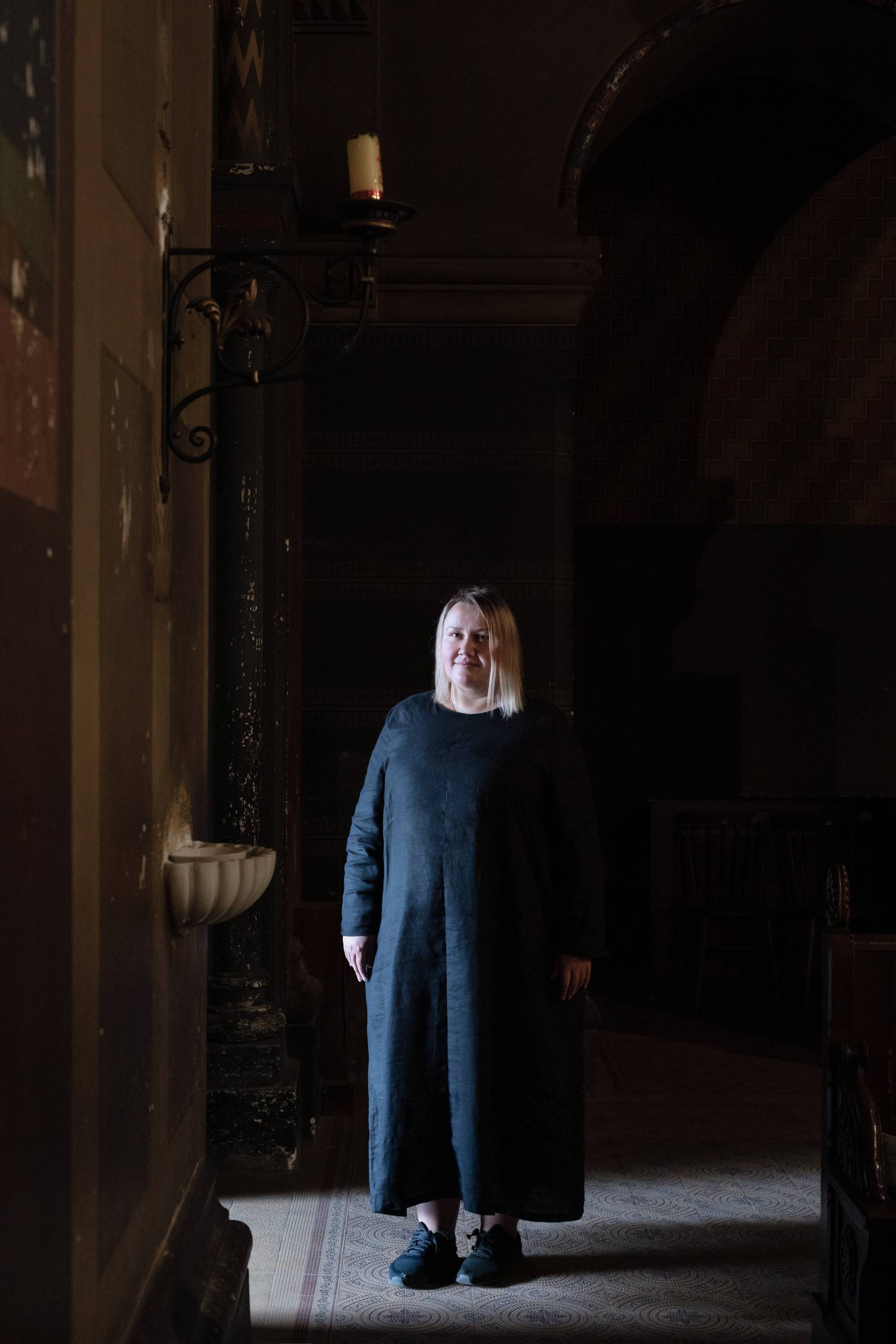
Victoria Yakusha is a Ukrainian architect, designer, founder of YAKUSHA studio, FAINA brand and mother of four children. She lives and works between Kyiv and Antwerp.
How does the creation of your studio relate to the redefinition of Ukrainian culture?
I started FAINA after the Maidan Revolution in 2014, in Ukraine. It was a crucial time for us, a moment of renaissance in terms of self-identification. I started to revisit our symbols and crafts and incorporate them into new forms in design. It felt very organic and empowered me a lot. The world didn’t know much about Ukraine, and I was driven by a desire to share our culture and its beauty. I see FAINA as a community of people striving to foster society-wide activity.
One of the outputs was an exceptional event called Land Inspires, which you organized in 2018 and 2019 and I was lucky enough to attend it. What motivated you to do it?
FAINA didn’t start as a business. It was about our Ukrainian identity, values, and traditions that we would like to pass on. I wanted to do more, to show how strong and creative Ukraine really is, the history we have. The right format for the design expedition didn’t come to me for a long time, and one day I just had a vivid dream about it. From the subconscious came the answer I had been looking for. For many of our artisans, it is the work of a lifetime, passed down from generation to generation.
Their knowledge is inestimable, there is tremendous depth behind it. So I wanted to support them, to inspire the whole world with their work and to show how their techniques can be revived in modern expression. It was an enriching experience for both sides. To go deep, to remind ourselves of the great value and history we have. It helped our guests understand Ukraine better. They told me that it was life-changing for them, something that will stay with them forever.
Which artisans do you usually work with?
We work with craftsmen from all over Ukraine. The core of our tapestry for Design Miami/Basel was made in the Carpathians. Our artisans used a traditional wool weaving technique, and then our team added other layers. This was the synergy of times, an example of how tradition connects with modernity. For the works in glass, we collaborate with craftsmen from Lviv, a city in the West of Ukraine. The technique of freeblowing is more than 1000 years old and is still used only there. Clay work is mainly done in the Kyiv suburbs. Our artisans make ceramic decor for us, but also sculptural holed facades for our cabinets.
Your products are named after traditional musical instruments, symbols of Ukraine and even smell like Ukrainian clay. Why?
Ukrainian cultural codes and traditional forms influenced my work a lot. But it’s not something I simply look at and take inspiration from. It’s already inside me, I grew up with it, and I retranslate it into the language of my design. It is a huge part of my “live design” philosophy. Many objects resemble what I used to see, the essence of the source itself stays recognizable, but it is never direct. The Soniah floor lamps are Ukrainian sunflowers, but the lighting itself is very primitive, even a bit rough in texture because of the sculpting technique.
When I created the Bandura set, I first drew a symmetrical shape of the main vase and then added a smaller one to balance it. Only with the time did the meaning revealed itself. The Ukrainian bandurists, men who played bandura (a traditional Ukrainian musical instrument), went from village to village, passing on our history through their songs. They were often blind and travelled with guides. Unconsciously, I drew a big and a small bandura vase, later realizing that the small one was actually symbolic of a guide, who travelled with and lead a bandurist.
What materials do you focus on?
Our materials come from the Earth – wood, wool, clay. I do not maintain materials in a traditional way. I retell and preserve the tradition so it doesn’t lose its meaning, but do so within a contemporary context, a new vision. I share the love for tradition in a modern way.
You have also developed your own sustainable material, Ztista, which combines clay, recycled paper, wood scraps and applied on a recycled steel or cardboard base. What was your motivation?
Our live design philosophy is based on working with living materials, and I wanted to create our own fully sustainable mixture. For me as a person and for us as a brand, it’s very important what we leave behind. I respect the Earth, I always try to think of sustainability. Today’s design needs an overhaul – more sustainable architecture, interiors, products. The technique we applied for Ztista was on the surface. It is the traditional wall-finishing method, known to all Ukrainians. Something very native.
What can Ztista be used for?
Almost everything. We use it for sculpting chairs, tables, lighting. I love that the result is unique every time. There are no two identical objects, which makes each piece even more valuable. Right now we are working on a special art project using Ztista.
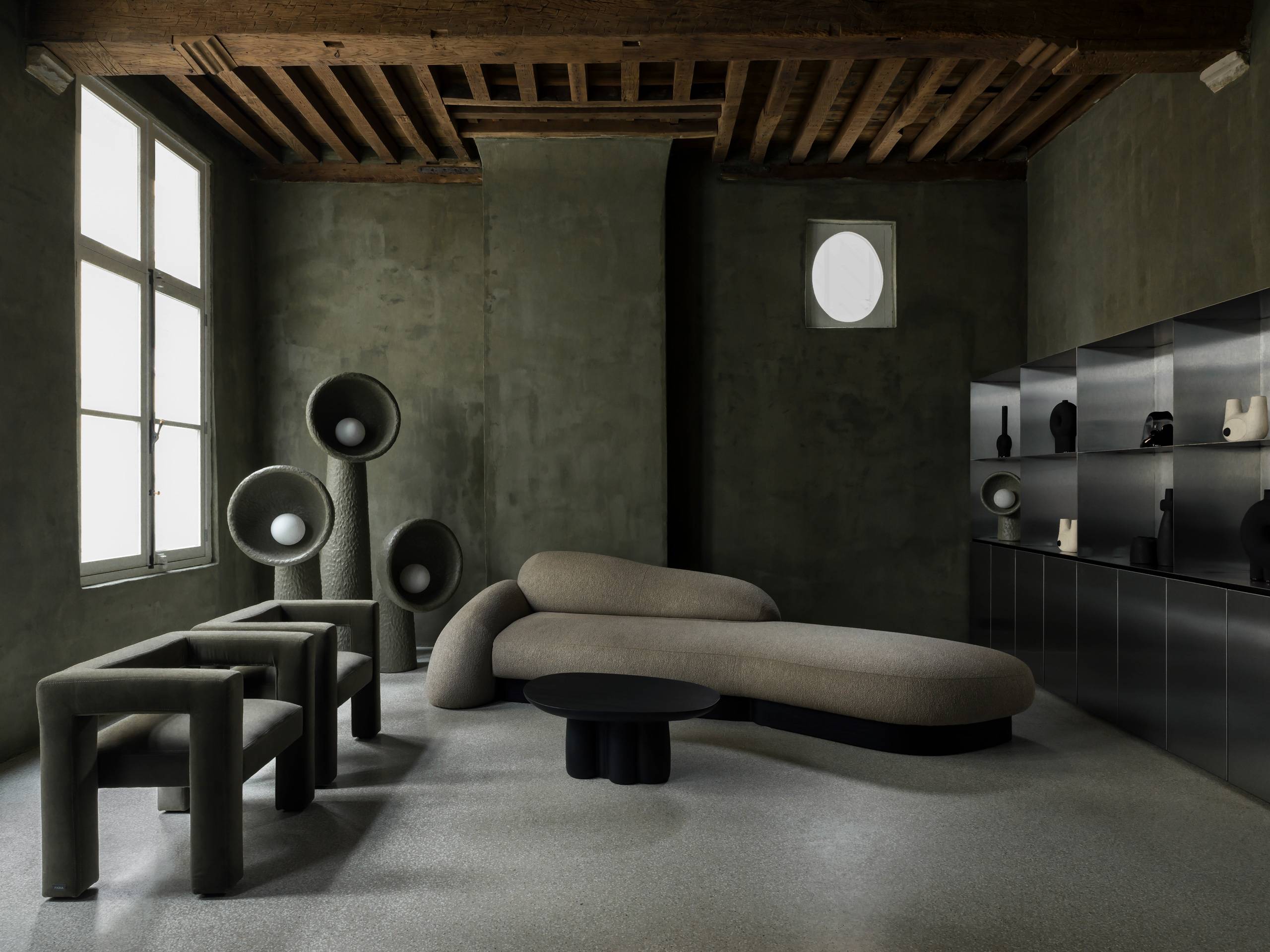
From 2021, FAINA has a showroom in a historic 500-year-old building in Antwerp’s Keizerstraat.
What role and weight do you think young designers and researchers have in contemporary design?
They move this world and bring a broader, more voluminous vision of it. It always inspires me a lot to see new perspectives on what may seem well-known or obvious. It’s also an ongoing process and the commitment we made as a brand long ago. So I am in a constant search-and-experiment mode. At the moment, we are developing a fully sustainable packaging for FAINA.
You operate between Kyiv and Antwerp, where you also have your main showroom. How has living abroad influenced you?
The pace of life is very different in Belgium. In Ukraine, we move and make decisions much faster. But sometimes you can lose the joy of the moment. That’s what I learn from the Belgians – their art of slowing down.
How did you manage to break into the international market?
It’s been a long journey. In the beginning, in 2014, we were literally invisible, but became successful thanks to the essence of the brand, the distinctive primitive style we have formed. FAINA also has a great responsibility. We were the first to represent Ukraine at major international exhibitions, we appeared in Vogue or Architectural Digest as “Ukrainian design”. Year after year, we went deeper into our craft, organized work with our craftsmen, who often lived so far out that they did not even have a stable network connection, we developed our singular visual language.
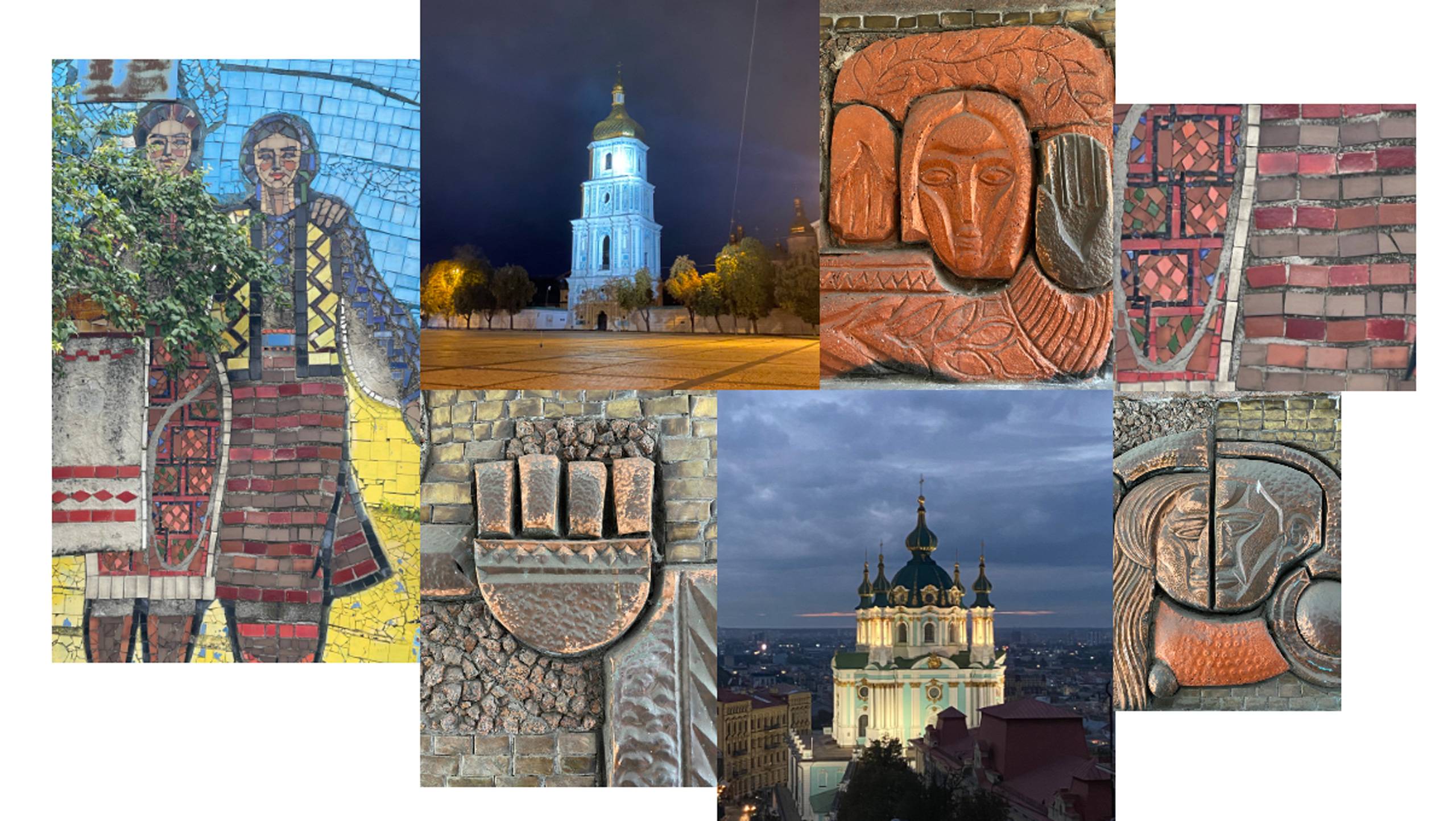
What was your breakthrough project?
Bandura vases and Toptun armchairs I guess. They were the first to become popular and got attention from the global press and worldwide clients.
What kind of people make up FAINA’s clientele? Is there any way to define them?
Very conscious, educated, open-minded people, for whom values are important and who are looking for a soul in an object. They want something special and authentic.
Last year at Salone del Mobile you also presented a new collaboration with Lasvit. Can you tell me more about it?
I have known and loved Lasvit long before, I loved the way they worked with glass and the unique things they were creating from it. A few months before Salone del Mobile, we received a call from Art Director Maxim Velčovský with a proposal to develop something together. We had almost no time, but impossible tasks are what drives us even more. In the end, it was the fastest collaboration in the history of their brand.
Tell us more about Sluhach.
I‘ve my own style that I work in – it’s living minimalism. It is similar to naive art or primitive art. In Ukraine, primitivists are very strong, it’s related to our culture, our worldview. So as an artist I also inherited these features. With Lasvit, we made lamps that are very different from their permanent collection. I wanted to create something that would give the brand a different perspective, so the lamps come in very primitive shapes.
But this primitivism is imbued with a deep meaning. A strong message is key for me in every expression. Sluhach means ‘listener’ in Ukrainian. But listening here is not in the sense of hearing. It is about a state of feeling and understanding, about knowledge. When you hear not what is said, but what is meant. Understanding the nature of things.
Is Sluhach your first realization in glass?
I’ve wanted to work with glass for a long time. During Summer Solstice 2021, in Paris, we presented a limited series of fluid vases crafted with the ‘gutnytstvo’, a traditional Ukrainian technique of free blowing.

What advantages and disadvantages do you think glass as material has?
Initially, I wanted to create the lighting larger, but this was not possible because of the nature of the material. In general, glass is very living, it has a dual nature combining strength and fragility.
FAINA’s portfolio is really broad – it ranges from accessories to furniture, to lighting. Do you regularly design for other manufacturers as well or are these rather exceptions?
This year, we have divided FAINA collection and my limited-edition designs, and in the future I will focus more on collaborations. When you bring together different energies and worlds, something special always comes out.
In addition to the FAINA, you also work as an interior designer at the eponymous studio YAKUSHA. What kind of interiors does YAKUSHA create?
I love when an interior is ‘living’. Natural materials and textures, a sense of purity, every object appears to be a harmonious part of the space as if it’s always been there. Also, I love when the interior is naturally balanced, so I juxtapose and combine a lot. New and old, big and small, smooth and rough.
How would you actually describe yourself and your work? What is most important to you, whether you are working on a product or creating an environment?
It may sound strange but I associate myself with the Earth. Vast and prolific. I am an architect, designer, creative director, artist. I never had limits in expression. I am a huge fan of niche perfumery and a few years ago I just felt like creating my own fragrance for the home. I did not know anything about its creation process, but I knew that I wanted it to be the scent of Earth herself with a touch of raw, humid soil.
The perfume seemed very layered, complex, I think I expressed my essence through it. All my projects reflect my worldview, how I think and what I feel. A few months ago, we started working on a redevelopment concept for Chernihiv, one of the oldest Ukrainian cities, heavily damaged by Russians during the war. I went into this because I wanted to convey the DNA of this city, to establish a solid foundation for its further development.
Your philosophy could be described as “live minimalism” and “modern primitivism”. Can you explain what exactly the these two lines are?
Live minimalism reflects my connection to Ukrainian roots and nature and my worldview as an architect. I am always drawn to clean lines, very primitive, and speak with shapes rather than with colors. Primitivism is pure expression, minimalism is also about purity. We call our minimalism ‘live’ because of living energy. I connect with things or spaces only when I feel them as if they were alive. When the object tells a story, when it has a meaning and a soul. In my perception, living objects are usually made by hand, materials come from nature. That’s what I was looking for in other brands before I designed FAINA.
We can’t avoid the topic of the Ukrainian-Russian conflict. Does it affect you personally?
It is not a conflict, it is a war. Russians have invaded our land, and what is happening now is a true genocide of the Ukrainian people. The war is only geographically in our country, but in reality it has long been outside Ukraine. It is a war of values, a war for the future of the whole world. I feel every event of this war deeply and painfully and experience a great admiration for my people, their strength and courage.
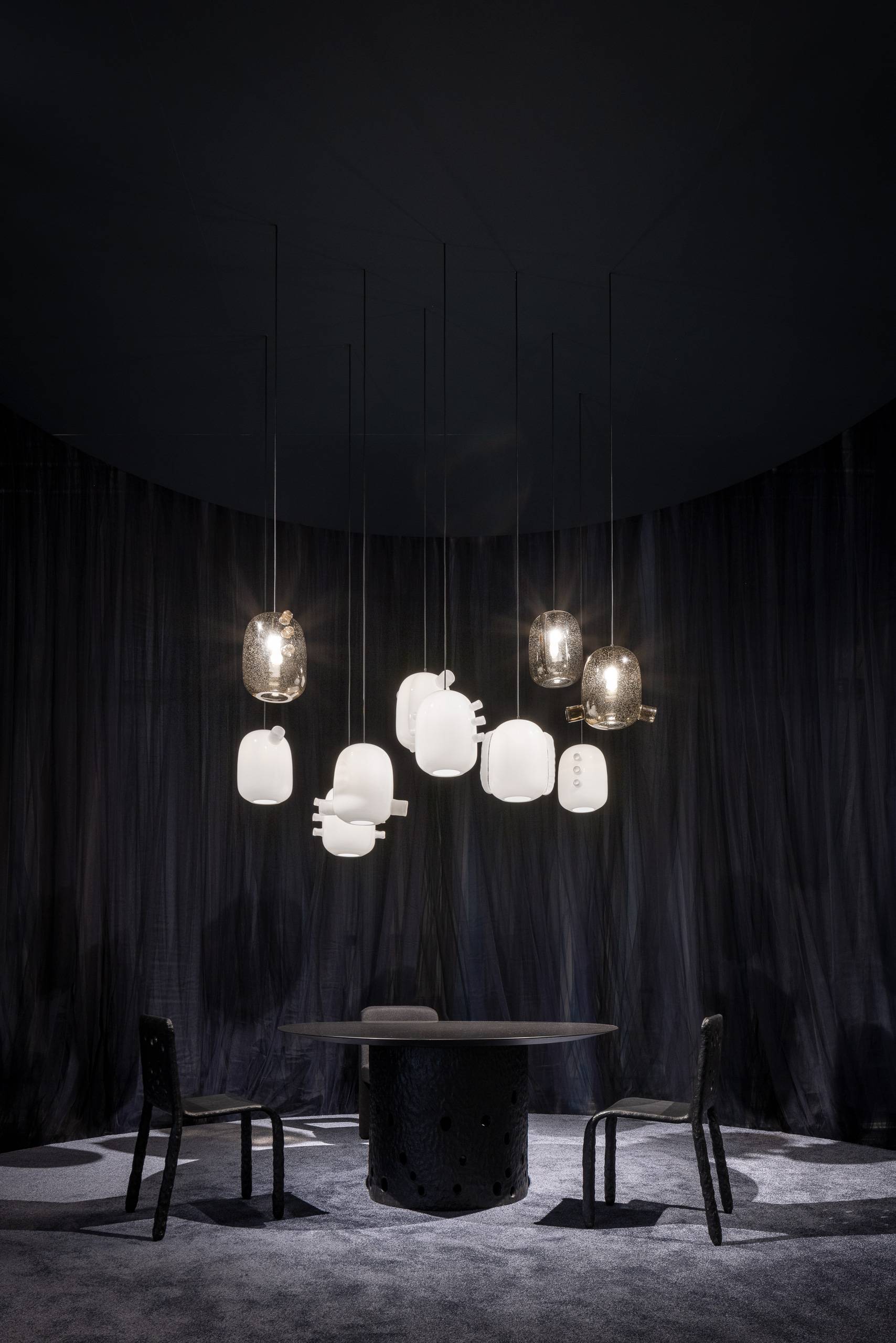
What are the current conditions for designers in Ukraine? Are they able to work as before?
After February 2022, almost everyone has been in survival mode for 3–4 months, trying to put themselves together. There was no creativity in your head at all, it was the horror that fills you from the inside out. But after a while, that horror turns into an understanding that you have to keep moving. That’s each person’s way of letting life win over the death brought to our land. Maybe the life theme has not yet manifested itself in creativity. But I think designers will work with this narrative because it is exactly what we exude, and it is our attitude, our choice, our decision. It’s like our position in life. We choose to live, no matter what.
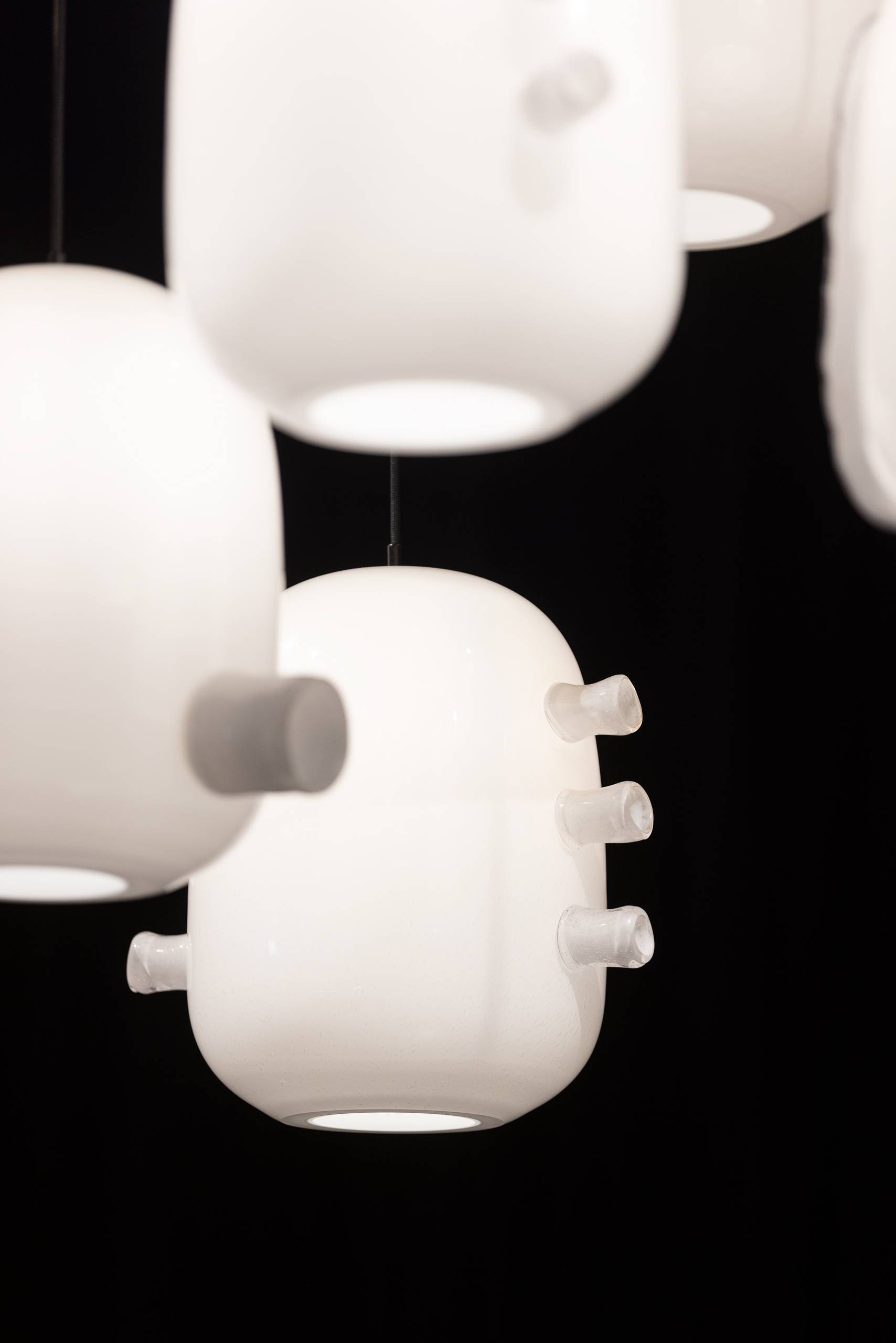
Is it possible to make any plans in this situation?
Ukrainians are encouraged to resist by doing their regular activities as much as possible. So we keep doing what we like. We prepare new collections, focus on collaborations and projects on the verge of art and design. Since the beginning of FAINA, I felt my mission to pass on and preserve the Ukrainian cultural heritage and wanted to build a museum.
Even under these harsh circumstances, we have already started working with the Maria Prymachenko Family Foundation to make it a reality. I really hope it will materialize as soon as possible and everyone will have an opportunity to enjoy Ukrainian culture in person. For the time being, there are at least ambassadors of our culture such as FAINA.

Victoria Yakusha is a Ukrainian designer and architect behind the multidisciplinary architecture, creative direction, interior and product design studio YAKUSHA since 2006 and the brand FAINA since 2014. Victoria received her architecture degree from the Prydniprov State Academy and the Institute of National Applied Sciences (INSA) in France. She is deeply inspired by Ukrainian culture and traditions, which she tries to express through design and architecture. She has created her own unique style of “living minimalism”. Her works stand out for their laconic but sensual approach. They are full of textures that engage all the senses and invite you to feel the soul of the objects. Since 2022, Victoria Yakusha has been part of the Lasvit family with the Sluhach lighting collection.


